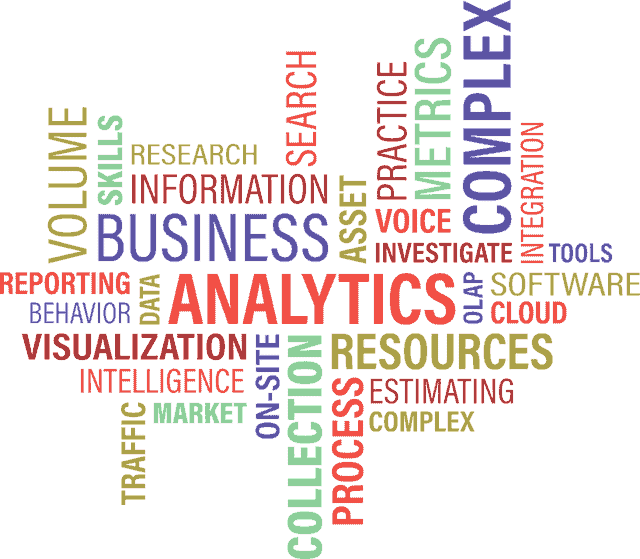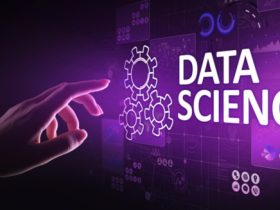For ages, organizations have counted on their senior business leaders and industry experts to make key decisions. Based on their intuition and rich experience spanning across various business verticals, these business leaders made decisions that could make or break the fate of their establishments. However, the decisions that rely on expert-based intuition, at times, lack credibility and accuracy. With the influx of big data , the industry has witnessed a radical shift from intuitive decision making models to the use of risk analytics tools.
Rapid globalization has resulted in industries operate beyond geographical boundaries, with global supply chains, outsourcing of services, and global financial activities. Organizations are bombarded with data, structured and unstructured, from diverse sources. The human intuition cannot keep up with the huge volume of data generated at high speeds. To analyze and extract useful information from the massive database, organizations are investing heavily in risk analytics tools.
Risk management, as a concept, has gained precedence due to the increasing complexity and global nature of establishments. Neither can every possibility be identified, nor can every event be controlled. However, the data, if processed in the right way, can divulge information about the nature and outcome of the risk.
Risk analytics involves gathering and managing data, building mathematical models, and effective interaction with the results obtained using risk analytics tools. These techniques aid in measuring, quantifying, and predicting risks with high certainty and clarity, by integrating possible uncertainties into one consolidated system.
See also :Internet of Things Cloud : Cloud Computing
The implementation of risk analytics technology and tools provides a greater insight into the major drivers and indicators thus leading to reduced exposure to risks. Improvement in the strategic decision-making abilities, along with increased operational efficiency, has led to a widespread acceptance of risk analytics tools in industries, large and small. Increase in competitive pressure on SMEs and the growing adoption of big data solutions across industry verticals, drive the growth of the technology.
According to the report added by Progressive Markets, the high initial cost associated with its setup and integration, in addition to the lack of skilled and expert technicians as system integrators and service providers, restricts the growth of the global risk analytics market.
Risk analytics is gaining momentum in diverse sectors, including BFSI, automotive, manufacturing, transportation & logistics, IT & telecom, retail, healthcare, government utilities, and others. The banking and financial services sector is prone to fraudulent attempts and rapidly changing market dynamics.
The industry faces countless challenges such as varying economic conditions, changing preferences and demands of the consumers, and regulatory pressures by the governing bodies. Solutions based on advanced analytics assist the banks in managing the risk, monetary and reputational, associated with non-compliance. By analyzing the huge historic database, banks can predict the emerging trends in the economy as well as the peril of security breach. The information enables them to take preventive measures and devise strategic business moves by extracting meaningful information from the unused data. Recently,
see also :What is an IoT Platform ?
Mastercard unveiled new tools to help its customers detect potential credit card frauds beforehand. The technology is an integration of different predictive analytic tools that determine the level of risk linked with a card or an account. On analyzing the potential risks, an alert explaining the seriousness of the risk is sent to the bank associated with the account. The bank then decides the actions to be taken, depending on the magnitude of the risk. According to MasterCard, the system can capture frauds, irrespective of the type of breach and the transaction channel. It can detect incidents ranging from active criminal trading of data to the testing of cards before the fraud is committed.
The applications of risk analytics are not limited to a particular set of industries. Accurately predicting the erratic nature of the weather is a daunting task for the meteorologists. Integration of risk analytics with weather forecast tools provide real-time weather analysis and is the perfect tool for industries located in areas prone to natural calamities.
The technology can be used to foresee the changes in the weather conditions. For instance, Riskpulse, a leading provider of weather-related risk analytics for the supply chain industry, advised and cautioned their customers about the possibility of the threats from winds, storm surge, or floods faced by their supply chains during the 2017 Atlantic hurricane season.
These tools can quantify the risk associated with every branch of the supply chain, such as stores, production facilities, and storehouses, and assist in making quick decisions to avoid heavy losses due to natural catastrophes and unforeseen changes in the environmental conditions.
The market is flooded with a myriad of risk analytics tools provided by the leading players such as IBM Corporation, SAP SE, FIS Global, Axiom SL, Oracle Corporation, Verisk Analytics, Inc., and others. These applications include transform and load tools, dashboard & risk reporting tools, governance and compliance tools, risk calculation engines, and visualization tools.
See also: What is Big Data? Why is it important? & Applications of the Big Data
If you like this post subscribe to our YouTube Channel for IoT video Tutorials.
ABOUT AUTHOR :
Piyush Mandhare,
Digital Marketing Executive
piyush.mandhare@progressivemarkets.com
US: + 1-888-906-9222 / GMT: + 35-376-680-1176
https://www.progressivemarkets.com










1 Review